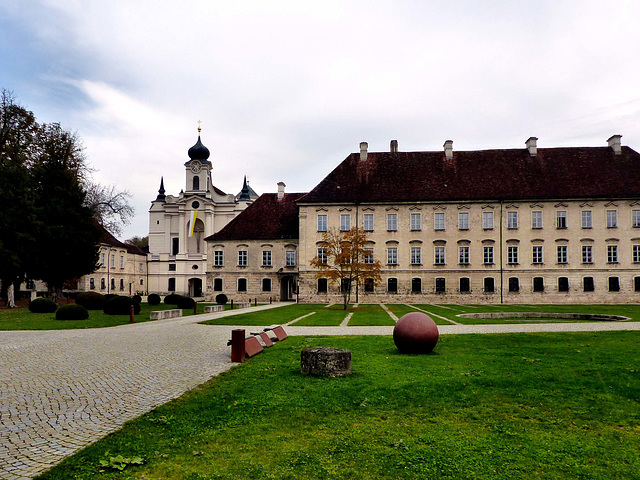Traunreut - Bubblegum Machine
Sondermoning - Landgasthof Zenz
Reit im Winkl - Groissenbach
Urschalling - St. Jakobus
Urschalling - St. Jakobus
Urschalling - St. Jakobus
Urschalling - St. Jakobus
Urschalling - St. Jakobus
Westerndorf - St. Johann Baptist und Heilig Kreuz
Westerndorf - St. Johann Baptist und Heilig Kreuz
Pähl - Metzgerei Wiedmann
Rott - St. Johannes der Täufer
Rott - St. Johannes der Täufer
Hohenfurch - Mariä Himmelfahrt
Hohenfurch - Mariä Himmelfahrt
Altenstadt - St. Michael
Altenstadt - St. Michael
Altenstadt - St. Michael
Altenstadt - St. Michael
Altenstadt - St. Michael
Altenstadt - St. Michael
Altenstadt - St. Michael
Peiting - St. Michael
Kloster Raitenhaslach
Kloster Raitenhaslach
Kloster Raitenhaslach
Burghausen
Burghausen - Taufkirchen-Palais
Burghausen - St. Jakobus
Burghausen - St. Jakobus
Passau - St. Stephan's Cathedral
Passau - St. Stephan's Cathedral
Passau - Wilder Mann
Passau - Niedernburg Monastery
Straubing
Straubing - St. Peter
Straubing - St. Peter
Straubing - St. Peter
Straubing - St. Peter
Straubing - St. Peter
Straubing - St. Peter
Straubing - St. Peter
Straubing - St. Peter
Bamberg - Cathedral
Bamberg - Cathedral
Location
Lat, Lng:
You can copy the above to your favourite mapping app.
Address: unknown
You can copy the above to your favourite mapping app.
Address: unknown
Keywords
Authorizations, license
-
Visible by: Everyone -
All rights reserved
-
127 visits
Kloster Raitenhaslach


The Raitenhaslach monastery was founded in 1143. The water-rich location was ideal for the specific cultivation by the Cistercians, including in the form of pond management. The Cistercians ate a meat-free diet as pescetarians, so a sufficient supply of water and the possibility of extensive fish farming were essential. The monastery´s property grew rapidly through donations. It owned a number of villages and even a winery in what is now Lower Austria.
The House of Wittelsbach, residing in the nearby Burghausen castle, took on the role of sponsor and caretaker of the monastery in the mid 13th century. In the 15th century the monastery church served as a burial place for the ducal family from Burghausen, and at the beginning of the 16th century it was particularly Ludwig "the Rich" who supported the monastery in the fight against the Reformation.
Over the centuries, the monastery has been rebuilt and expanded several times. Construction activity was very lively in the 18th century, when the monastery church was given its present form for the 600th anniversary of the order and was converted from a Romanesque basilica into a Baroque church.
In 1803 the monastery was dissolved in the course of secularization, but only the lucrative parts of the monastery, such as the brewery, could be sold, the majority of the buildings were demolished. The immense inventory were sold to the highest bidder. Furniture and art objects to wealthy citizens and the nobility, and agricultural equipment to farmers in the area.
The monastery church became a parish church in 1806. The remaining monastery buildings have since served as a parsonage, school, brewery, restaurant and as private apartments.
The House of Wittelsbach, residing in the nearby Burghausen castle, took on the role of sponsor and caretaker of the monastery in the mid 13th century. In the 15th century the monastery church served as a burial place for the ducal family from Burghausen, and at the beginning of the 16th century it was particularly Ludwig "the Rich" who supported the monastery in the fight against the Reformation.
Over the centuries, the monastery has been rebuilt and expanded several times. Construction activity was very lively in the 18th century, when the monastery church was given its present form for the 600th anniversary of the order and was converted from a Romanesque basilica into a Baroque church.
In 1803 the monastery was dissolved in the course of secularization, but only the lucrative parts of the monastery, such as the brewery, could be sold, the majority of the buildings were demolished. The immense inventory were sold to the highest bidder. Furniture and art objects to wealthy citizens and the nobility, and agricultural equipment to farmers in the area.
The monastery church became a parish church in 1806. The remaining monastery buildings have since served as a parsonage, school, brewery, restaurant and as private apartments.
Alexander Prolygin, Nicole Merdrignac have particularly liked this photo
- Keyboard shortcuts:
Jump to top
RSS feed- Latest comments - Subscribe to the comment feeds of this photo
- ipernity © 2007-2025
- Help & Contact
|
Club news
|
About ipernity
|
History |
ipernity Club & Prices |
Guide of good conduct
Donate | Group guidelines | Privacy policy | Terms of use | Statutes | In memoria -
Facebook
Twitter

Sign-in to write a comment.